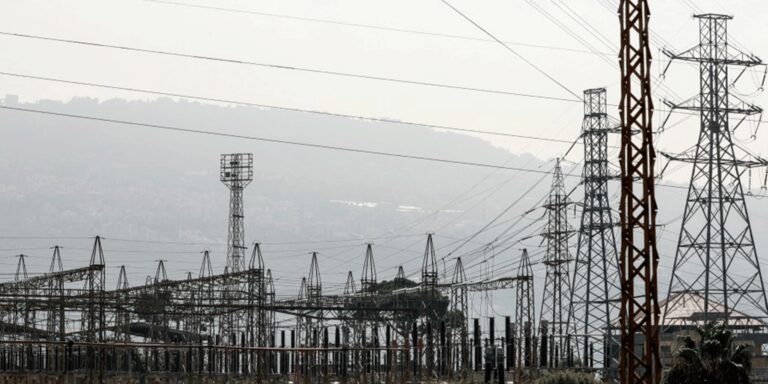The construction of the Grand Ethiopian Renaissance Dam (GERD), the largest hydroelectric project on the African continent, is now complete and all that’s left is the “official” start of filling it; i.e. it has unofficially started. Satellite imagery shows an increase in the water area of the artificial lake that may change the continent’s features toward either a water war or a globally lauded agreement. Meanwhile, in the rainy season in the high north of Ethiopia and as huge amounts of water are flowing into the Blue Nile River, the Water Authority in the Sudanese capital, Khartum, declared that several drinking water stations on the Nile were out of service due to a sudden receding of the White and Blue Nile rivers and the Nile River, according to Sudanese local media. At the same time, Egypt witnesses uncommon worry waiting for the outcome of the course of negotiations with Ethiopia and Sudan and reaching a comprehensive agreement that guarantees its water rights.
The heavy rainfall of the northern Ethiopian highlands; the Blue Nile headwaters and the features of thirst below, in the upstream countries, is a critical moment in the history of the conflict, which has taken root in the moment when Ethiopia decided to build a giant dam, a decade ago. Through the Renaissance dam, with a storage capacity of more than 70 billion cubic meters of water, the Ethiopian government aims to bring about comprehensive economic development, providing electricity to more than 65 million people. The country has suffered severe droughts in recent years, which resulted in a decline in food production and the loss of a significant number of livestock due to thirst and lack of pasture, and more than 60 percent of the population is still deprived of electricity and clean, safe drinking water distribution systems.


But this giant Ethiopian project causes thirst in Sudan and Egypt, especially the latter, as the biggest part of the damage would affect it because of its location in the Nile estuary, made up of the Blue Nile, coming from the Ethiopian northern highlands, and the White Nile, coming from Lake Albert, located between Uganda and Congo, passing through southern Sudan. If the dam is filled within four years, as Ethiopia wants and plans, Egypt will face a serious crisis on the four levels that can be defined as follows:
First, the decrease in water flow in the Nile will reduce the electric power generated, and some power stations may stop working as a result. This is the primary paradox of the dam, providing electricity to the population of Ethiopia while depriving the Egyptians of it.
Second, the dam will cause huge damage to Egypt’s irrigation system, leading to a decline in agricultural economies and food production.
Third, the dam will make the Nile unnavigable due to water levels receding, this will nearly paralyze Egyptian navigation, which is considered an important pillar of its national economy.
In addition, the Ethiopian project will cause tremendous damage to the environment and biodiversity along and within the river, due to crippling the ability of the river’s environment to manage itself through its creative ecosystem.
The Underlying Causes of the Crisis
The primary reason for this territorial dispute over water resources is a massive population explosion over the last 50 years, which has increased demand for food, water, and energy. According to statistics by the Faculty of Humanities at the Canadian University of Sherbrooke, Ethiopia’s population was only 23 million in 1960 and reached more than 109 million in 2018. The population increased during this period by 393 percent, and the number is expected to be about 171 million by 2050. Egypt’s population in 1960 was 27 million, and reached more than 98 million in 2018, with a 270 percent increase, and it is expected to become 120 to 150 million by 2050.
This giant Ethiopian project is causing thirst in Sudan and Egypt, especially the latter, as the biggest part of the damage would affect it because of its location in the Nile estuary…
The escalation of climate change is another cause of the current African crisis between Egypt, Ethiopia, and Sudan. With temperatures rising and rainfall decreasing, a large number of villagers head towards cities to search for work, food, and water, and, of course, to escape the heat. Such migration, which has become part of a new demographic in many regions of the world, would place additional burdens on natural resources, owing to urbanization, which in turn requires more energy, water, and power generation. These internal migrations will have an impact even on internal stability in countries that are on the Nile and cause social and tribal conflicts, as in southern Iraq, because of water scarcity.
What are the Proposed Solutions?
Solutions to water crises among the three countries require new thinking and water policies to pave the way to the so-called “water unions.” With population explosion in riparian countries around the Nile and its sources, all previous international agreements on the river are subject to violation, unless they are updated according to demographic, economic, and environmental variables. The establishment of regional aquatic federations could be a framework for formulating new policies, not only for water, but for larger economic, commercial, and, of course, cultural partnerships, since rivers have always been reasons for intercultural, intellectual, and religious exchange. There are regional and continental agreements in this regard; such as the Mekong River Commission in Southeast Asia between Thailand, Cambodia, Laos, and Vietnam; and the Senegal River Basin Development Authority, in West Africa, between Senegal, Mali, Mauritania, and Guinea; not to mention European agreements on international river basins. The European communities were inspired by the French-German cognac trade after World War II to find solutions to the security issues between the two countries, followed by the 1951 coal and steel trade before the EU project’s initial seed in its current form. Couldn’t investment in Nile water be thought of as an infrastructure for another African regional union on the Nile, following the example of global experiences?


It is not enough to agree on the distribution of river water by scheduling the filling of the Renaissance dam reservoir as a lasting and sustainable solution to the crisis, because the population explosion and increasing demand for water also impose their conditions. Next, new water policies require thinking about raising the level of voluntary reproductive health care and high-level education among communities as well. Investment in photovoltaic and aerodynamic energy is a proposed solution to prevent water disputes and thirst wars, but it requires the support of international donor institutions for the stability of the eastern European continent.
At the level of local and regional policies, staying on the Nile requires that all parties raise the white flag, by recognizing the new demographics and community rights to water and food, for a blue peace, not only for residents and citizens around the Nile, but also for future generations and the future of the East of the dark continent.






